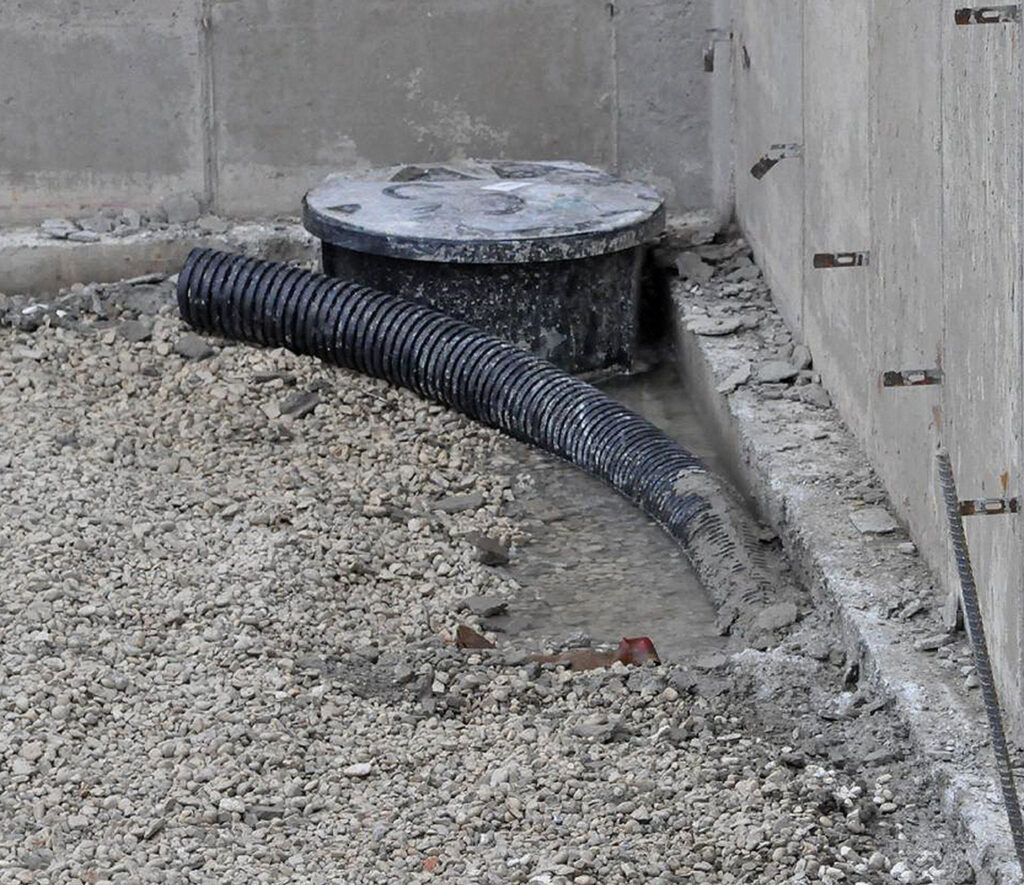In the Fargo, North Dakota metro, most homes are equipped with a drain tile system and sump pump, which work together to keep basements and crawlspaces dry. These systems serve as the primary defense against moisture buildup around the foundation, ensuring your home stays dry even during heavy rainfall or snowmelt.
How Drain Tile and Sump Pumps Work
Drain tile typically consists of a perforated pipe installed around the foundation (Fig. 1). Its job is to channel water that accumulates next to and beneath the foundation into the sump pump pit. From there, the sump pump moves the water out of the basement through a pipe that runs either above or below grade.
The Benefits of a Diverter Valve
Many newer homes feature a diverter valve (Fig. 2), allowing you to direct sump pump discharge either to the sewer system or outside the home. This added feature is especially useful in colder climates, as it can prevent the discharge pipe from freezing, which might otherwise lead to pump failure and potentially a flooded basement.
Discharging Through the Exterior Wall
For homes without the option to discharge water to the sewer system, sump pump water is typically discharged through an exterior wall during the winter months (Fig. 3). However, it’s crucial to take precautions to avoid pipe freezing, which can lead to serious issues. To prevent the discharge hose from freezing (Fig. 4), disconnect it before the winter sets in. If the hose freezes and water continues to flow into the sump pump pit, the pump will keep running without being able to expel the water, potentially causing it to burn out and leaving your basement vulnerable to flooding (Fig. 5).
Winterizing the Discharge Pipe
In preparation for the winter season, we recommend installing a larger pipe—such as a 3” PVC pipe—over the existing discharge pipe (Fig. 6). This added layer of protection helps prevent freezing while still allowing water to be directed away from the foundation.
In our opinion, this method offers the best solution for sump pump discharge during the winter unless you have the option to send the water to the sewer system.
For more winterization tips, check out the edition Lars Knows Winterization and other Lars Knows editions to learn how you can better protect your home and protect your investment.






